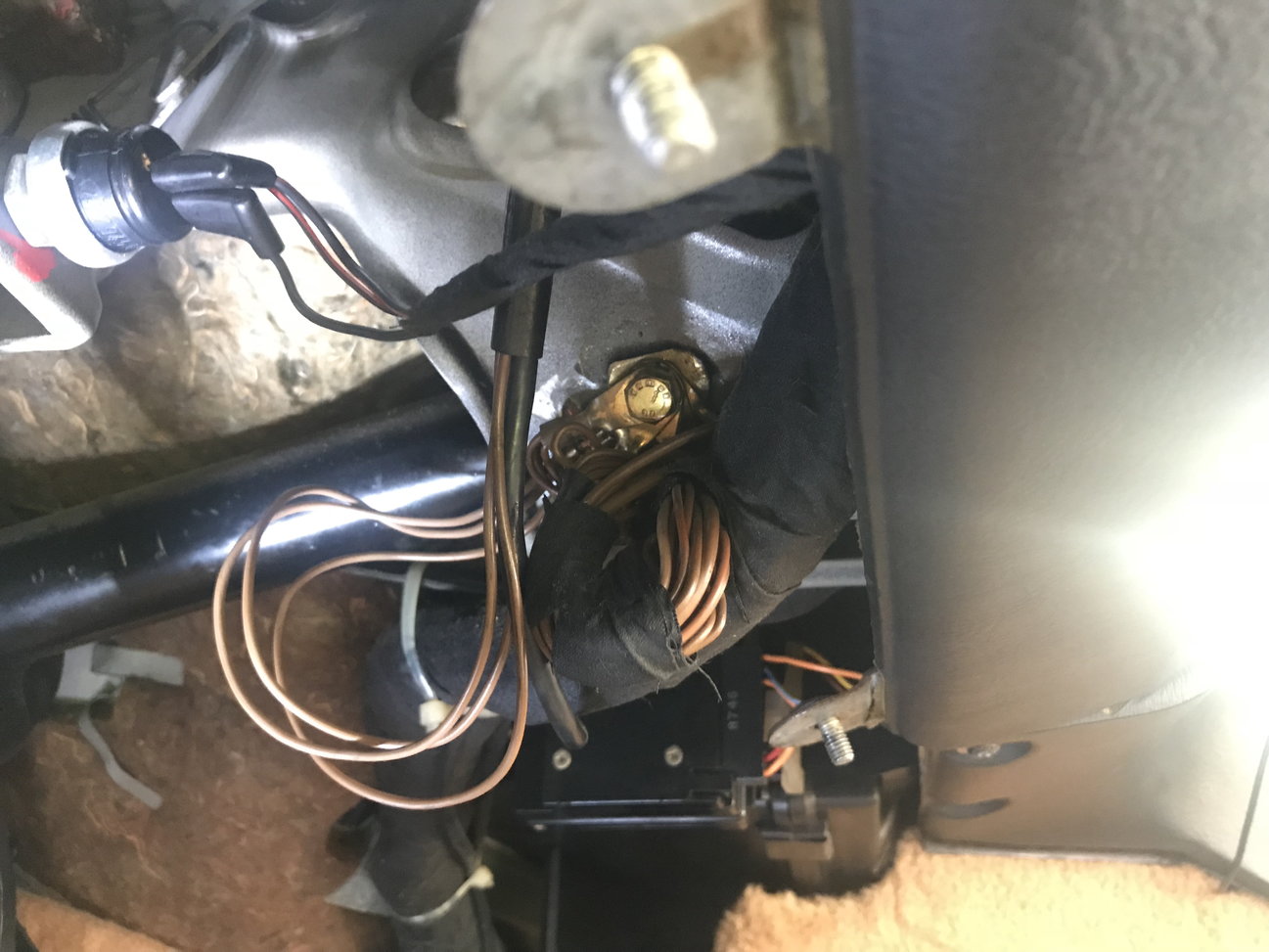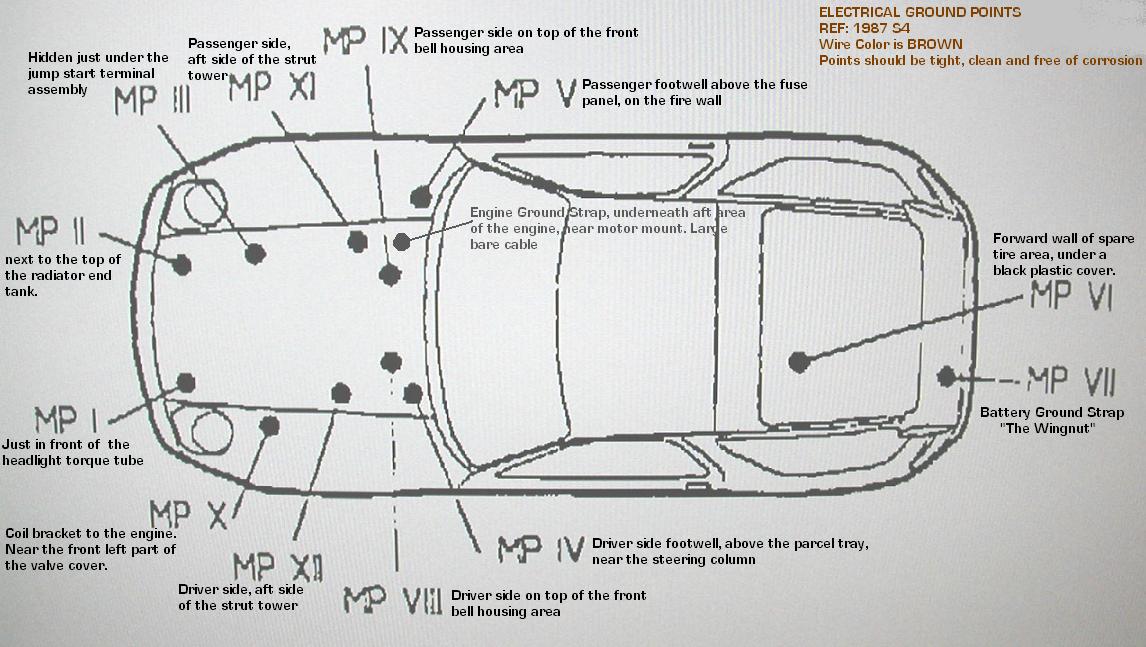
Darren 85S <dw928@hotmail.com> Wrote
I cleaned the following straps and wanted to know what I missed:
Engine to frame on pass side under car.
passenger-side coil to lift point on front passenger-side of engine
driver side coil to behind the timing belt
connection to the brains in front of passenger-side coil
connection at rear of car behind tool panel
the battery terminals
Darren 85S, 5spd, 103k miles, sick and won't idle...
==========
There is a ground wire from the engine to the crosspiece *above* the
steering rack. You have to drop the rack to get access to the
fasteners that hold the substantial wire to the crosspiece, a loose
nut through a hole and a bolt! Ask me how i know. I don't know
where it attaches to the engine.
Mark Anderson says he figures it was a fired, bitter Porsche engineer
getting even on his last day on the job.
--
Will
---------
The battery connections on your car take several different forms.
- Lead Terminals. The lead battery posts can develop two different types of
"corrosion" - white lead oxide, and the almost invisible form. If you use a
sharp tool on the posts, the feeling should be like cutting cold butter - very
firm, but very smooth. If the feeling is at all "crunchy", there is an
insulating oxide present. They can look very clean, but still be very high
resistance.
- The Brass and Steel Connections. The only answer here is to polish, polish,
polish. The ground strap connections (both ground straps!) and the small, but
critical, connections on the positive terminal connection are the primary
suspects here.
- The Cables. The cables, especially the bare ground straps can develop internal
corrosion that will increase the resistance. One way of checking is to measure
the voltage drop across the cable. Set your multimeter on the lowest Direct
Current Voltage (DCV) scale. Get a good connection on each end of the cable, and
check the voltage reading as an assistant operates the starter. There should be
virtually no voltage drop - anything over 0.1-0.2 volts should be grounds for
suspicion.
Another quick and easy test that sometimes works is to feel for a hot
connection. Operate the starter, the headlamps, high blower, or any other
high-current device, and feel the circuit connections. Any connection that is
perceptibly warm should be carefully cleaned and checked.
Wally Plumley
928 Specialists
www.928gt.com

=========
Ground point below the air pump diverter valve is MP XI and is a normal ground
cable. This is NOT the ground for the engine electronics.
The MP IX is below the plastic wheel where the gas cable runs to the gas
butterfly valve. It was broken some time a a GTS I've seen. The real repair is
not difficult but takes some time. at this ground point there are more that one
wires connected. All need to be clear and nicely soldered to a connector.
It was badly corroded.
Opposite of the MP IX is the MP VIII. This is an extra ground for the injector
valves. Goes to LH-ECU on PIN 17, also make sure this one is ok...
Theo
The GPIX is under the throttle cable pulley wheel, under the air filter
housing. You may have to remove a fuel pressure regulator to get at it. It is
hidden under a "P" clip for part of the cable harness.
John.
_________________
Ground point XI:
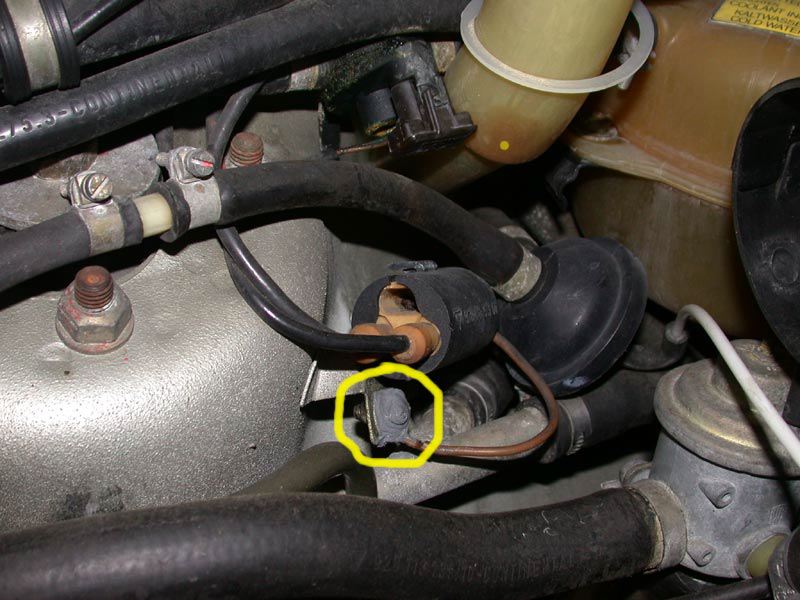
Ground point XII:

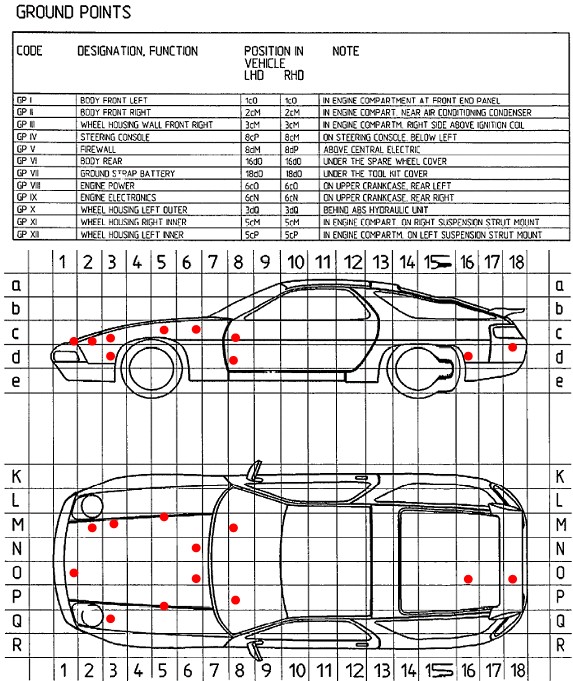
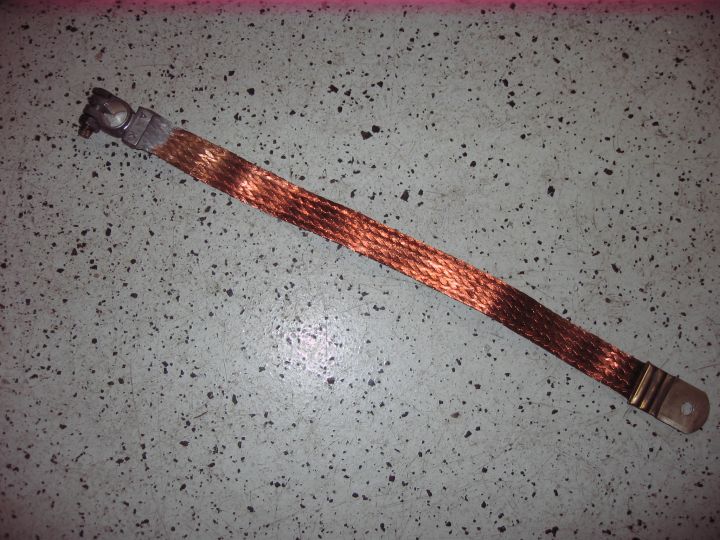

Battery Ground strap to chassis. Check for corrosion. Use acid-free vaseline or special battery-grease to prevent moisture. A real good contact is required.
And this is the main engine ground strap. Same story. Be aware that battery power to starter flows through here besides the normal power consumers. 50 amps is very common. 1 Ohm resistance generates already 50 watts. A lot !!! So conduction must be optimal.
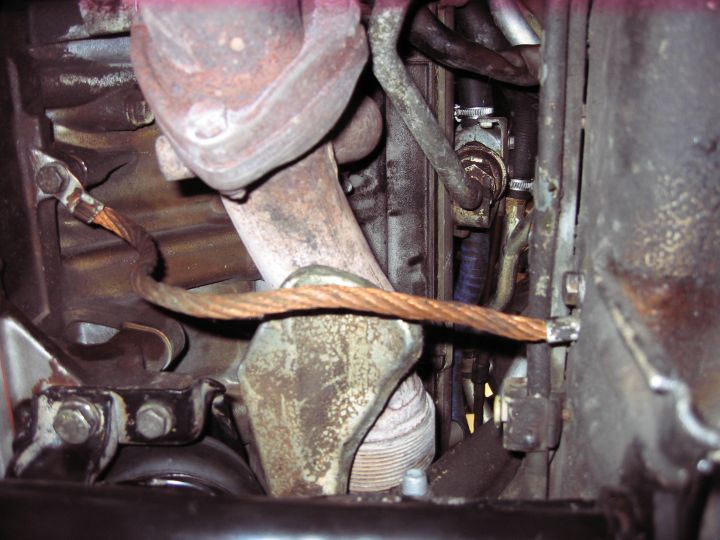
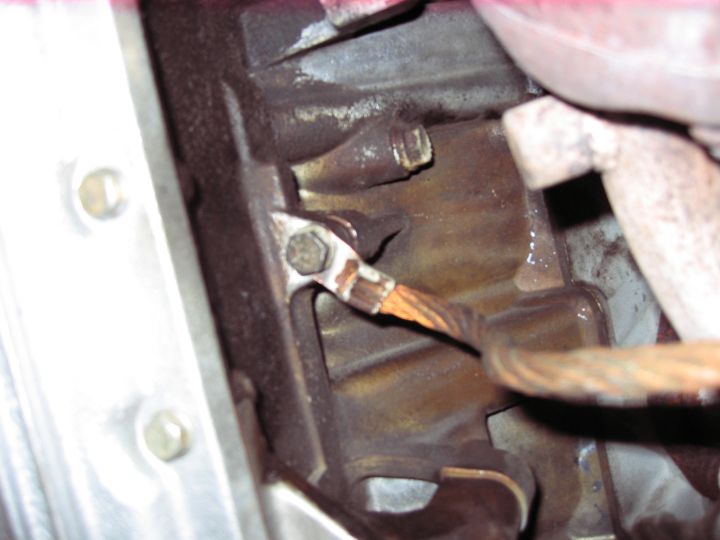

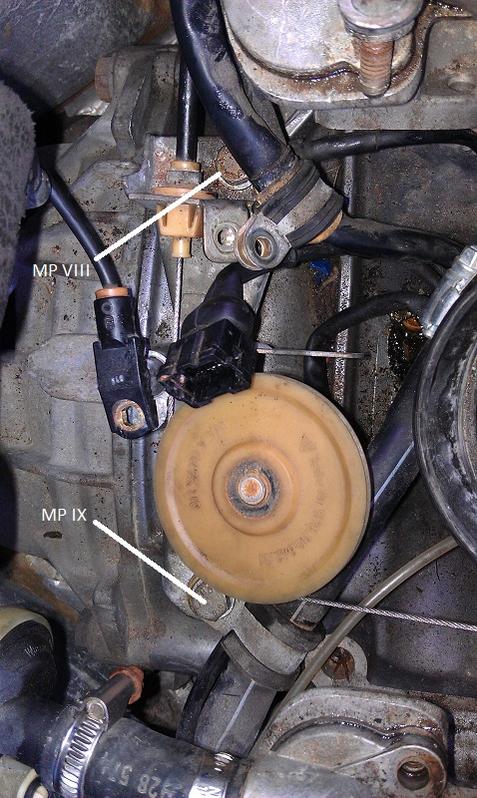
Ground point IV for cars with Airbag:
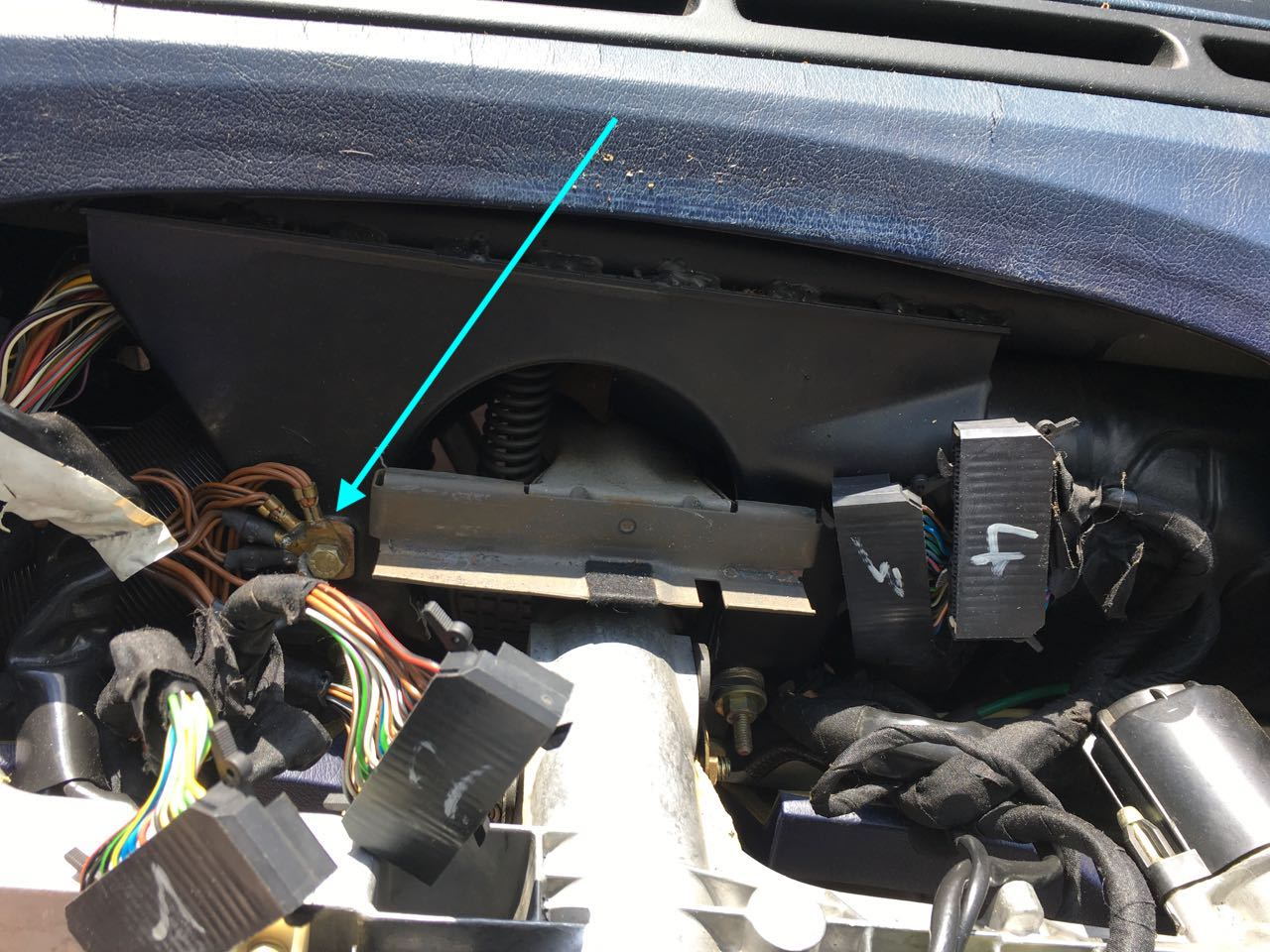
Ground point IV for cars without Airbag:
